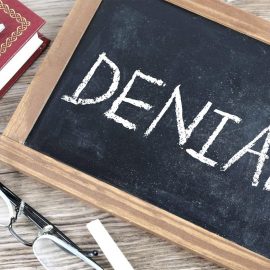

This article is an excerpt from the Shortform summary of "The Smartest Guys in the Room" by Bethany McLean and Peter Elkind. Shortform has the world's best summaries of books you should be reading.
Like this article? Sign up for a free trial here .
What is Azurix? What did it have to do witth the Enron collapse?
Azurix was a part of Enron International. Azurix, a water supply company, followed yypical Enron fashion and made big deals without ever really providing a solid product. When Azurix went public, CEO Rebecca Mark stressed the importnce of appearanes—a polocy that later got enron internationl and azurix into trouble.
Azurix and The Rise of Jeff Skilling
With the power vacuum, Skilling (head of Enron’s trading operations) maneuvered into the COO role, basically by threatening to quit if he didn’t get it. This triggered a number of changes:
1) The focus shifted to trading as the core of Enron’s business. Physical assets that actually dealt with supplying energy were sold off.
- EOG (Enron Oil and Gas) was spun off. It still survives today as a public company, EOG Resources.
2) Enron’s trading scope expanded outside natural gas. Their aim was to become “The World’s Leading Energy Company.” They expanded into electricity, and they engaged in plant deals from gas plants to water, steel, and paper. The promise was huge – if Enron could create an electricity-trading business and claim 20% of it, the payoff would be enormous.
- But they overextended, believing the markets were more similar to gas than they really were. For example, as an outsider to electricity, Enron was feared as the big player that incumbents shouldn’t partner with.
3) Enron International head Rebecca Mark was sidelined and knew she wouldn’t rise further in management. She decided to buy a British water utility, forming the company Azurix. (This would later end in failure, described in a later chapter.)
4) Skilling set up a Risk Assessment and Control (RAC) department, which publicly was believed to be watertight and having strong veto power over risky deals. Stock analysts believed Enron had tight risk management capabilities, which gave Enron the leeway to take on more risk than other companies.
- In reality, RAC was just a yesman, with a weak manager in place who didn’t fight against bad deals.
- RAC staff also faced strong pressure to close deals to hit quarterly numbers. Enron’s staff had a peer review system that was a key component of promotions and compensation. Deal originators within Enron threatened poor peer reviews for RAC peers who didn’t approve deals.
Enron International is In Trouble
Meanwhile, former head of Enron International Rebecca Mark was in deep trouble at water services company Azurix.
With typical Enron hubris, Rebecca Mark thought water was easy and the incumbents were ancient. They would come in, make large deals, and figure out the details later. They also anticipated privatization of water supply, and a coming water crisis.
Immediately they ran into competition with two global heavyweights who competed aggressively for contracts to service municipalities.
Azurix was also in money trouble – the Wessex deal had cost a lot, and Enron saddled Azurix with large debt. So Azurix IPO’d in June 1999, raising $800 million at a stock price of $22 – despite people knowing Azurix obviously wasn’t ready to go public.
Now a public company, Rebecca Mark stressed the appearance of making big deals to buttress their stock value. In the few deals that Azurix won, they vastly overbid, largely out of desperation to signal momentum.
- Azurix won a contract in Buenos Aires, where the operations they inherited were so poor they couldn’t bill 40% of their customers and the facilities were lacking basic maintenance. It became clear Azurix would never make money on that deal.
4 months after IPO, Azurix had fallen to $13 a share; on a pessimistic earnings call in November, it fell to $8.
By the end of 2000, Azurix had less than $100MM in operating profit, down from $232MM at its start. Its debt load had quadrupled to $2 billion. Enron announced it would acquire the public shares at $8.375 a share.
Jeff Skilling, Rebecca Mark’s rival, took every opportunity to ridicule Azurix as a failed business model, in comparison to his asset-light “logistics” and trading businesses.
Enron believed that Azurix was so unimportant that if it failed, it wouldn’t have any effect on Enron. This later proved wrong. For instance, Enron had $1 billion of debt they were not clearly on the hook for.
(To Mark’s credit, Azurix at least represented real assets and cashflow – low, but cashflow nonetheless).
On Oct 16 2001, Enron shared its third quarter report. They were sanguine as usual: “recurring Q3 earnings of $.03 per diluted share; reports nonrecurring charges of $1.01 billion…reaffirms recurring estimates.”
- The Wall Street Journal attacked the nature of the writedowns in a series of articles.
- Prompted by these articles, the SEC began an informal inquiry into Enron’s dealings with Fastow’s partnerships. Announcement of this sank the stock 20% to $20.65
- Oct 17: Moody’s announced it was placing Enron’s debt on review for a possible downgrade. It focused on 3 issues: negative operating cashflow, slow progress in asset sales, and more writeoffs involving Dabhol, Azurix, and broadband.
- Oct 23: Andy Fastow was interviewed about his income from the LJM deals. The next day, Whalley fired him.
Ultimately, prosecutors chose a simpler, broader strategy – rather than analyze specific transactions and prove their illegality, they asserted that Enron had severely misrepresented Enron’s financial health, manipulating public earnings through devices designed to produce misleading results and failing to disclose facts about Enron’s dire position.
- Examples of things that should have been disclosed – EES losses being hidden in wholesale; writedowns in bad deals like Azurix; meltdown in SPEs like the Raptors; last-minute filling holes to make quarterly financials look better.
- Furthermore, accounting rules barred a company from using its stock to boost its income statement.
- Other things that looked bad in trial – their cashing out of lots of personal shares; extravagant lifestyles; legal settlements with many Enron employees (if nothing was wrong, why had they all settled?)
In May 2006, the jury found Skilling and Lay guilty. Lay died in July from a heart attack (some suspected he faked his death). Skilling was sentenced to 24 years in prison and a fine of $45 million.
LIke other Enron companies, Azurix never actually lived up to the profits they claimed. Azurix collapsed along with Enron in 2001.

———End of Preview———
Like what you just read? Read the rest of the world's best summary of Bethany McLean and Peter Elkind's "The Smartest Guys in the Room" at Shortform .
Here's what you'll find in our full The Smartest Guys in the Room summary :
- How Enron rose to become one of the world's most promising companies
- How Enron management's greed led it to start cutting corners
- The critical failures that crashed Enron's house of cards to the ground






